Limestone Caves
4a. Landforms: cave formation
Many landforms form from the breaking down of rock (weathering),
the removal of the weathered material (erosion) and the deposition
of the eroded material. Landforms include hills and valleys, floodplains,
beaches, karst (limestone areas) and limestone caves.
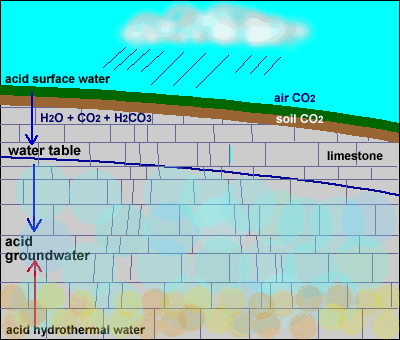 |
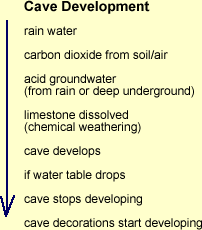 |
| Cave formation
is much more complex than the above explanation. Individual caves
form over very long periods of time and cave forming factors such
as climate, catchment water flow, vegetation and soils change which
impacts on cave development.
Once a cavern has formed and has air space, the deposition of calcite can occur and cave decorations (speleothems) such as stalactites and stalagmites can begin to form. |
|
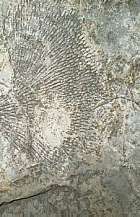 Fossil in the limestone at Yarrangobilly which formed about 440 million years ago from the shells and skeletons of sea animals and lime muds. |
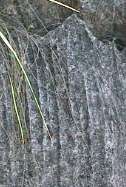 Solution flutes caused by rainwater flowing down the rock and dissolving
the limestone (chemical weathering).
Solution flutes caused by rainwater flowing down the rock and dissolving
the limestone (chemical weathering). |
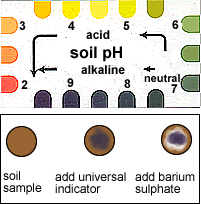 Soil pH is a measure of whether soil is acid or alkaline. This ttest is done by placing 3 drops of universal indicator on the soil sample. The indicator turns a colour depending on the pH. Sprinkle the soil with barium sulphate (a white powder) which shows the colour better. |
| Caves form when limestone is | ||
| cave formations |